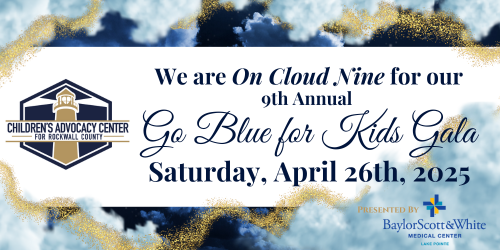…and we are the first to see the results
From 22-25 November, 2012 I took advantage of time off from work and a spate of extremely clear, unusually cold night skies to image the Orion Nebula, also known as M42.
During late November this iconic deep space phenomenon does not rise above the horizon until several hours after sunset, which is why it’s not a good idea to image Orion during the work week unless one wants to fall asleep on the job. Nocturnal hobbies like amateur astronomy do not mix well with workaday white collar engineering jobs like the one I hold.
Since our subject is the Great Orion Nebula, it’s important to understand the very nature of this nearby dust cloud. In this instance, “nearby” means 1,500 Light Years away. This means that the image you see below is actually looking back in time by 1,500 years. Yes, we really are time-travelling!
According to Bill Schoening of the National Optical Astronomy Observatory (NOAO/AURA/NSF), the great nebula in the constellation of Orion the Hunter is a glowing cloud of gas and dust that can be seen with the naked eye as a fuzzy patch surrounding the star Theta Orionis in the Hunter’s Sword, below Orion’s belt. In order to see the nebula with the naked eye, one must be at a very dark site with minimal light pollution.
Among amateur astronomers, M42 is considered the most spectacular of all the objects cataloged by Charles Messier, whose “M” catalog bears his last name’s initial. M42 had been known since the beginnings of recorded astronomy as a star, but it is so outstanding that it was first noted as an extended nebula in 1610, only a year after Galileo’s first use of the telescope. Detailed descriptions started appearing later in the seventeenth century, and it has been a popular target for anyone with a telescope ever since.
M42 is our closest example of an HII region, being composed mainly of ionized hydrogen which gives off the red glow so dominant in every picture of the nebula. The energy that causes the nebula to glow comes from the very hot young stars in a formation called the Trapezium, embedded in the brightest part of the nebula. Because I took the time to capture a series of 5/10/30/60/90 second sub-exposures, the newborn stars known as the Trapezium are clearly visible in this image.
The nebula and the brighter stars are very young indeed by astronomical standards, at about 30,000 years. Compare this to our own Sun, which is considered to be a middle-aged star at over four billion years! M42 probably contains several hundred stars younger than a million years, still bursting with the energy of youth. Stars are still being born in a dense cloud behind the nebula, but they are hidden from our view by a concentration of dust which reduces their light to only a million-millionth of its original intensity. Although M42 is mostly hydrogen, in both neutral and ionized states, with a fair quantity of dust, it does contain significant amounts of other elements, especially oxygen. The green glow of doubly-ionized oxygen is strongest near the intense ultraviolet starlight at the middle of the nebula.
Because our family lives in suburbia in Rockwall,Texas, capturing deep space astrophotography from home is more than a bit problematic due to significant light pollution from the Dallas Metroplex. However, thanks to advanced optical technology available today to the community, amateur astronomers are able to overcome light pollution by practicing a technique called emission line imaging. Emission line imaging isolates specific wavelengths of light emitted by ionized gasses when electrons that have been stripped off recombine, emitting a photon of a specific energy. The specific wavelengths used here are: Oxygen III (O III) at 495.9nm and 500.7nm, Hydrogen-alpha (Hα) at 656.3nm, Sulfur II (S II) at 672.4nm. All filters allow a 5nm-wide passband of light (photons of energy that constitute what humans consider as light) to land on the black & white CCD chip on my camera.

Full size image can be found at AstroDad’s website: http://www.astrodad.com/M42_LHa60_HOS-1-Hue_SHO-2-C.jpg
Creating a “memorable” deep space image requires considerable time, skill and patience, as well as “good equipment,” which usually means expensive. Astonishingly, a recent past president of a major Astronomical Society was fond of saying, “Anyone with enough money can buy the equipment needed to produce these pictures.” Today, several years later, I still take great exception to that comment – as in this case I sat outdoors in the freezing cold for about eight hours, then spent probably 3x that much time obtaining the desired result with my own processing technique.
So what is this “new technique”? This processing method sounds very simple but it took a long while to get it right. To create this image I processed one image by mapping the data according to what is known as Strict Energy Order in which the longest wavelength is in Red, the shortest in Blue and the median in Green. This is also known as the Hubble Palette. Then I created an image according to aesthetically pleasing colors according to the Canada-France-Hawaii-Telescope team (CFHT) method in which Hydrogen is red, Oxygen is Green and Sulphur is Blue. Next I moved the images to Photoshop and copied the CFHT image on top of the Hubble image. Simple blending in this way is not sufficient to reveal considerable detail. How to integrate the images was the “big challenge.” The solution to the problem of how to integrate the image data was to make the Hubble Layer as the color layer and the CFHT image as the Hue layer.
Something to consider when it comes to observing objects in deep space is that of color and what it means to “see” color. Unfortunately, we humans are colorblind at night. Wait, but you can see color on your car’s dashboard or on traffic lights at night. The reason we see these lights is because we are seeing the white component of light charging the color mask. So when I make an image using standard Luminance, Red, Green and Blue fliters and then process the image and stack the individual colors, they create a very rich and colorful object that no human eye could ever perceive at night. This is a case in which a human shortcoming is made up for by telescope technology. Moreover, when we image from a light polluted area (like my suburban driveway), using narrowband or emission-line filters designed to only allow certain wavelengths of light to pass through, we can control how the various wavelengths are mapped to the Red, Green and Blue channels. So the bottom line is that whatever I do to process these images is ok and represents one of thousands of possible human perceptions.
Speaking of perceptions, in this and almost every image of M42 I have ever created, there appears to be a very angry old man staring down and out of this massive cloud of interstellar gas and dust. Judge for yourself by looking at the purple area on the lower left side of the nebula. Do you seen the scowling man?
This image is particularly rewarding to me because it reveals detail I have never before perceived in the Orion Nebula. Apparently I’m not the only one who likes the image. You see, nine hours after posting the image to a popular social media site that rhymes with SpaceLook, people from across the entire planet had seen and commented on the image (Italy, France, Greece, India, Malaysia, Hong Kong and Scotland).

Our Universe Today is a column written by Blue Ribbon News special contributor, Max Corneau, aka AstroDad, of Rockwall.
Max retired from the U.S. Army in 2009 as a Lieutenant Colonel, Senior Space Operations Officer and Master Aviator. He amassed over 3,200 hours as a pilot of Special Electronic Mission Airplanes. Since 2004 he has been a NASA/JPL Solar System Ambassador, is a Master of Astronomical Outreach through the Astronomcial League and built his own astronomical observatory. His amazing images can be seen at AstroDad.com.
RELATED COLUMNS BY ASTRODAD:
Homage to Neil Armstrong
AstroDad shares insight on Curiosity’s successful Mars landing
Making sense of science: Higgs Boson Explained
How to buy a telescope: Part 1 and Part 2
Earth’s recent asteroid encounter is closest in 200 years
To submit your news and events or a guest column on your area of expertise, email editor@BlueRibbonNews.com.










